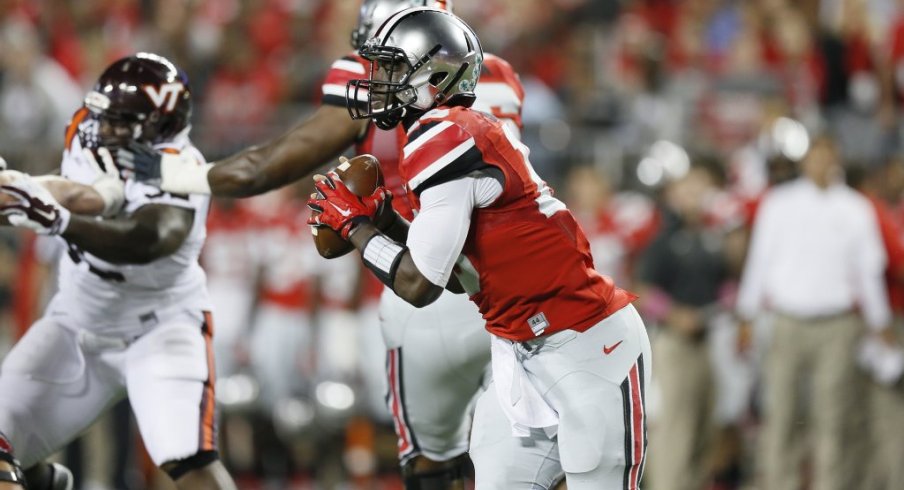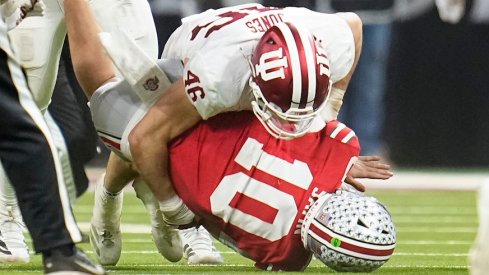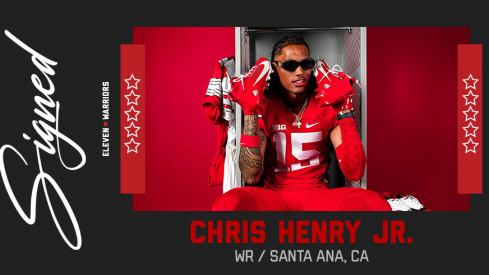When they gave up up two sacks in the opener to the undersized and unheralded Navy defense, questions arose about the ability of the Ohio State offensive line to protect freshman quarterback J.T. Barrett. After losing four seniors from the 2013 squad and moving the only remaining starter, Taylor Decker from right tackle to left, the Buckeyes were looking at a complete overhaul of one of the nation's most successful units the year prior.
With a veteran defense at his disposal, Virginia Tech defensive coordinator Bud Foster had a golden opportunity against Ohio State to turn up the intensity of the aggressive, blitzing defensive scheme for which he has become known.
Although Foster kept his gameplan in week one fairly vanilla for the William & Mary Tribe, he still showed a couple of his vaunted zone blitzes, one of which led to a sack and fumble that was one of the biggest plays of the day for the Hokies.
For those of you unfamiliar with the concept, it is not an exact play or formation, but rather an idea, and is exactly what it sounds like: a defense that blitzes an extra defender while dropping into zone coverage behind it. Made famous by former Ohio State defensive back and longtime NFL defensive coordinator Dick LaBeau, the zone blitz is most often associated with the 3-4 defense of the Pittsburgh Steelers he has run for years.
However, the zone blitz has evolved over time to the point that it's now run from virtually every defensive front and every zone coverage behind it. As the Virginia Tech defense showed Saturday night in Columbus, the key to executing a successful zone blitz is to create confusion up front, while keeping the back end protecting against a big play.
The Hokie defense began the evening attempting to create confusion for Ohio State, simply by mixing things up. Foster's secondary showed a mix of Cover 0 (straight man-to-man coverage with no deep safety), Cover 1 "Robber," and the Inverted Cover 2 defense that few teams have in the playbook.
The Ohio State passing game had difficulty finding any rhythm, a trend that would continue throughout the evening, as Barret connected on only four passes in the first half. But while they caused Barrett some trouble in completing passes, the Hokies only registered one sack in the first half, with no additional hurries or hits on the quarterback.
But after the Buckeyes found some offensive success in the second half, at one point tying the game at 21, Foster didn't back down from his gameplan, instead turning up the heat on the young OSU offense.
The Hokies put a barrage of defenders near the line of scrimmage, a consistently inconsistent bunch of linemen, linebackers, and defensive backs showing a host of different alignments in an effort to overwhelm the OSU blocking schemes. In a likely effort to keep things as simple and comfortable as possible in response, the Buckeye personnel didn't change much in response, always lining up with three receivers while leaving a tight end or running back in to help in pass protection.
But as the fourth quarter went on, the Hokies found more success getting to Barrett. As the young signal caller waited for his receivers to get downfield and separate from their defenders, the Hokies had enough time to get to their target, taking him down a total of six times in the final period.
Yet OSU still had a chance to tie the game with three minutes to play. After gaining big chunks of yardage on a 22-yard Barrett scramble and a 23-yard completion to Corey Smith, the Buckeyes had the ball at the Virginia Tech 42 yard line with just over a minute left on the clock.
As the Buckeyes faced a second and 7, the Hokies aligned a 3-3 look with all three linebackers crowding the line of scrimmage.
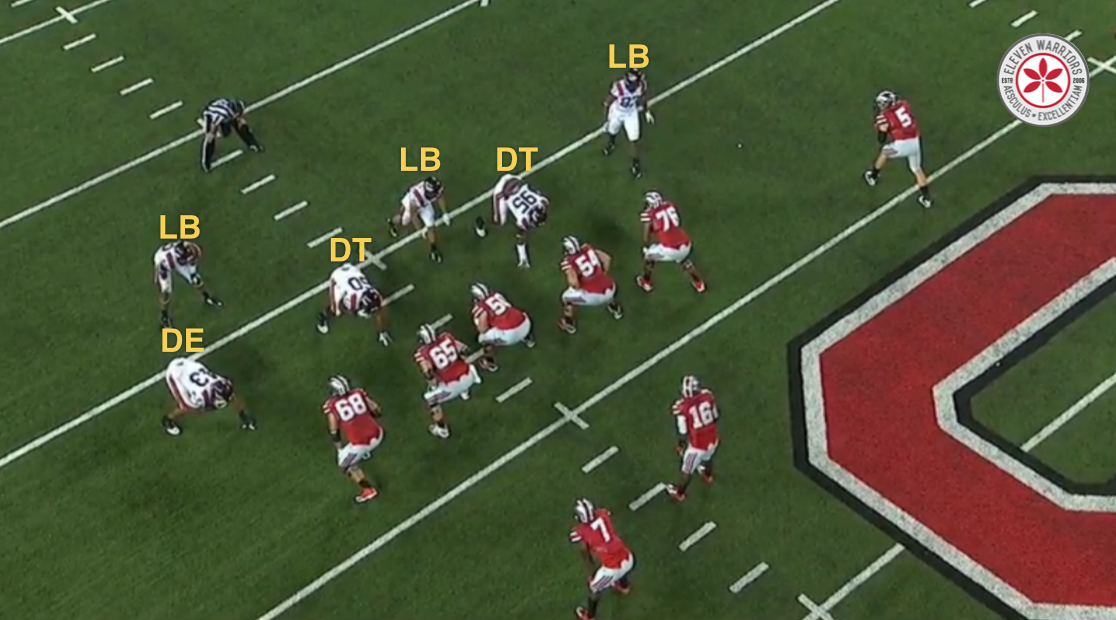
With tight end Jeff Heuerman (#5) lined up in the slot, Rod Smith (#7) reprised his role as blocking-back-extraordinaire, responsible for any pressure coming off the left side.
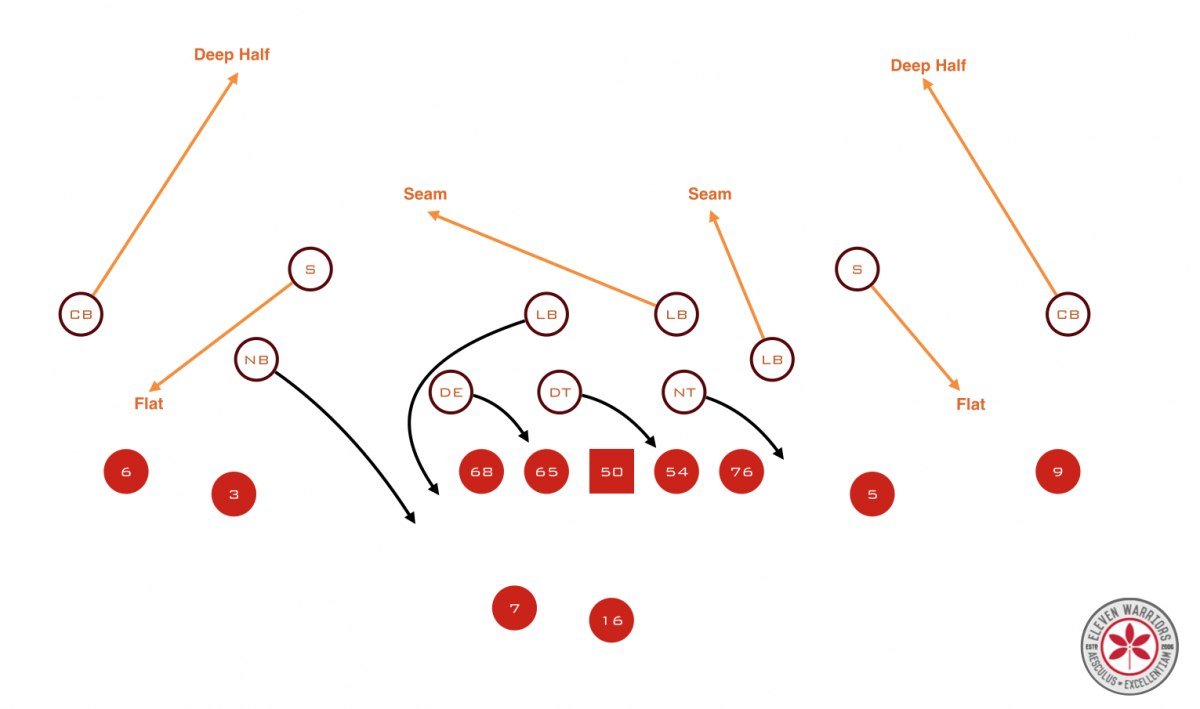
Although Virginia Tech only blitzed five defenders, leaving the remaining six players to cover receivers in a zone defense, the Hokies were able to confuse the offense based on the direction and timing of the players rushing the quarterback.
With the linebacker on the right side lined up like a defensive end, he appears to be coming for the QB. But at the snap, he instead drops into coverage as the defensive linemen slant towards the area he just vacated.
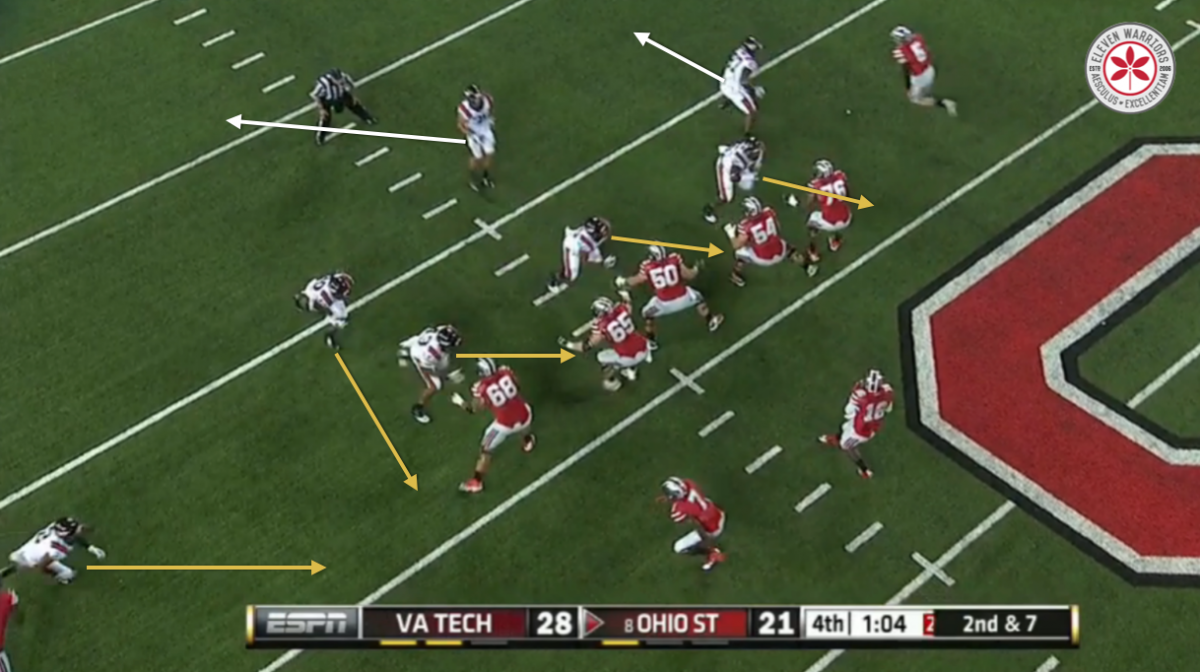
For the Ohio State offensive line, this seems like a fairly easy pickup. All they need to do is step to the right to pick up the slanting defenders, knowing that the gap on the left side will be picked up by Smith.
But that's exactly where the Hokies are looking to attack. Knowing Decker (#68) will pick up the defensive end slanting right in front of him, he won't be able to help when not one, but two defenders blitz immediately to his left, leaving Smith in a lose-lose situation.
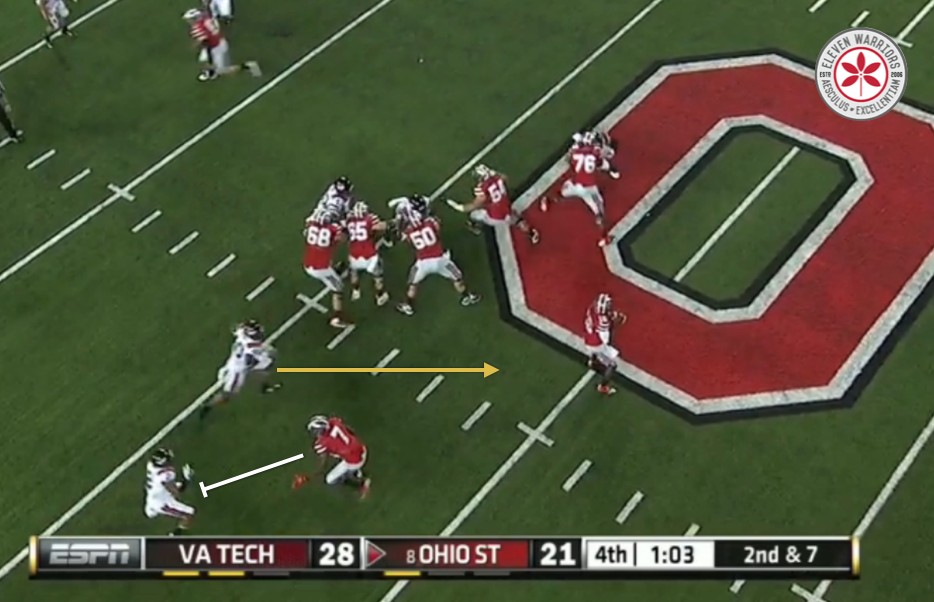
Smith correctly picks up the first blitzer on the outside, which happens to be the nickelback Donovan Riley (#2), but leaving inside linebacker Deon Clarke untouched on his path to the QB. Had Smith decided to pick up Clarke instead, Riley would've had the clean shot at Barrett.
Perhaps the most frustrating thing for the Buckeyes is that while chaos ensues on the left side, right guard Billy Price (#54) isn't blocking a soul. Price is correctly stepping to the right, protecting that gap, but there just isn't a Hokie to block.
So for the third time on the six-play drive, the Hokies took down Barrett.
The Buckeyes were forced to burn their final timeout, faced with a daunting third and 16, and all the momentum going in the direction of the Hokies. With so many sacks in the final period all coming from different zone blitzes, the Buckeye offensive line was finally without answers, and the cracks had begun to show.
As Barrett took the snap on the next play, the Hokies yet again appeared to be bringing pressure from five defenders at the line. This time though, Foster dropped seven players into coverage, creating a blanket of defenders and leaving no room for #16 to find a receiver.
The Buckeye offensive line had become to confused throughout the drive that a simple twist, bringing the defensive end inside and the nose tackle around the outside, was enough to beat them.
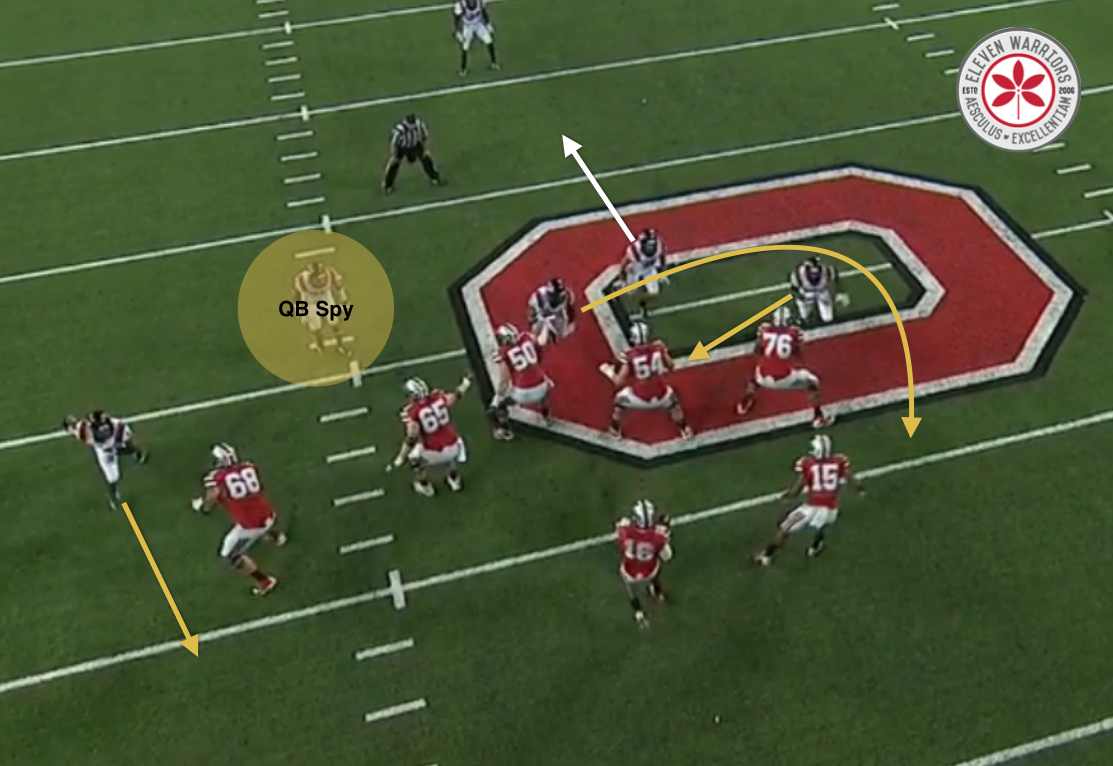
Feeling the pressure and assuredly tired of getting hit (again), Barrett forced the ball out, allowing Riley to make the game-sealing interception.
Moving forward, opposing coaches will certainly look to create confusion for the Buckeye offense up front, bringing pressure of their own. But few are as willing or able as Foster to throw such a variety at them.
Throughout the evening, Foster's defense brought pressure from every imaginable angle, giving little clue as to what coverage would show up behind it.
As a Buckeye fan, it was certainly frustrating to watch. In a few months though, I think we'll be able to look at the stats and see that this is a very, very good defense that left a trail of sacked quarterbacks in their wake.
The best the young Buckeyes can do is pick themselves up and learn from it, because the return trip to Blacksburg in 2015 probably won't be any easier.
